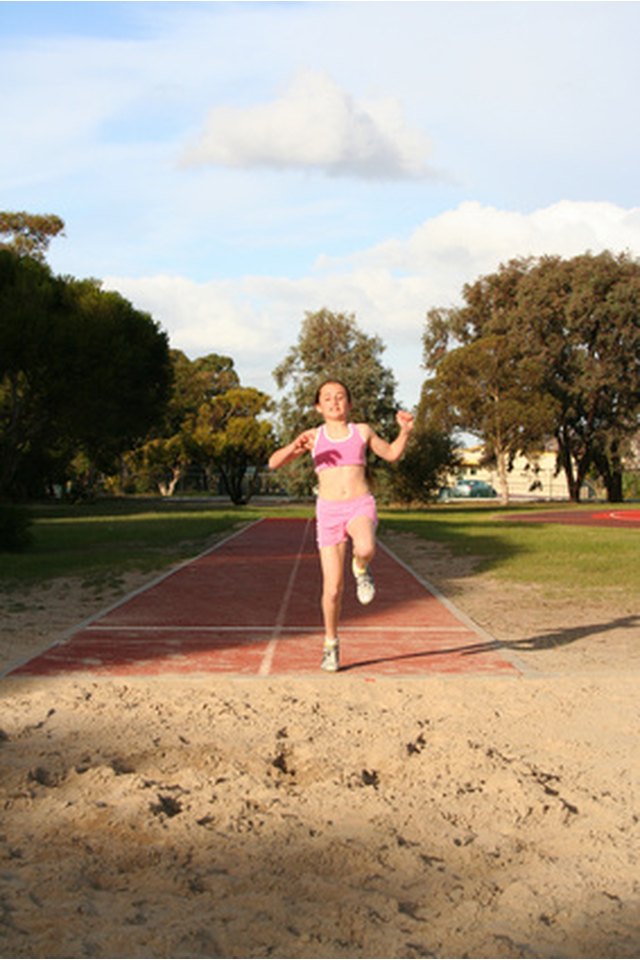Types of Track & Field Events

Track and field events can be traced back to the first Olympic Games held in Greece more than 2,800 years ago. Only one running event was held at those first Games, a race of about 200 meters. Other events were added over the years.
Track Events

track lanes image by jimcox40 from <a href='http://www.fotolia.com'>Fotolia.com</a>
Track races can vary in distance depending upon the age group and the type of track meet: youth, high school, college, amateur or professional. Distances usually range from 50 to 10,000 meters. In addition, relay races of different distances are common in track and field competitions, with four teammates each running various sections of the race, passing a baton to the next teammate. Sprint races in which competitors must run over hurdles are also common.
Throwing Events
In the throwing events, athletes throw various weighted objects, with the longest throw deciding the winner. The discus is a disk-shaped implement about 8.25 inches in diameter. The shot put is a metal ball, usually weighing from eight to sixteen pounds, depending on the age of the participants. The hammer throw is not common in youth or high school meets. The hammer is a heavy ball attached to a handle by a steel wire. The javelin is a spear-like object. A javelin thrower takes a running start on a runway and then hoists the javelin as far as possible. A competitor generally gets at least three throws in each event, with only his or her longest throw counting.
Jumping Events

track lanes image by jimcox40 from <a href='http://www.fotolia.com'>Fotolia.com</a>
There are four typical jumping events in a track and field meet. In the high jump, the participant runs to the jump point and attempts to jump over a bar, landing on a padded mat. The bar is raised in increments, and jumpers are eliminated after a set number of unsuccessful jumps. Pole vaulting is similar in that jumpers go over a crossbar, however the participant hoists himself over with a pole. In the long jump, the athlete takes a running start and jumps as far as he can into a sand pit where the distance is measured. The triple jump is similar to the long jump, but the jumper takes three consecutive jumps on each turn&mdash;a hop followed by a step on the runway and then a final jump into the pit.
Combined Events
Decathlons, pentathlons and heptathlons require each athlete to compete in series of track and field events. These &quot;combined events&quot; mix running, throwing and jumping and often are carried out over two days. Points are awarded for performances in each event, and the winner is determined by the most total points.
References
- &ldquo;Olympic Track and Field&rdquo;; Brian Belval; 2007
- &ldquo;Play&mdash;By&mdash;Play Track&rdquo;; Kristin Wolden Nitz andAndy King; 2004
- &ldquo;Field Events in Action&rdquo;; Bobby Kalman; 2005
Writer Bio
A 35-year child care specialist, Laurie Carpenter’s first writing involved scripts for a national award-winning cable program on child care issues. From cradle to grave, she worked for a historical cemetery, handling public relations and historical pieces for newspaper publication. Working towards her master’s degree in education, Carpenter also completed a certificate of journalism program at the University of Massachusetts at Amherst.
